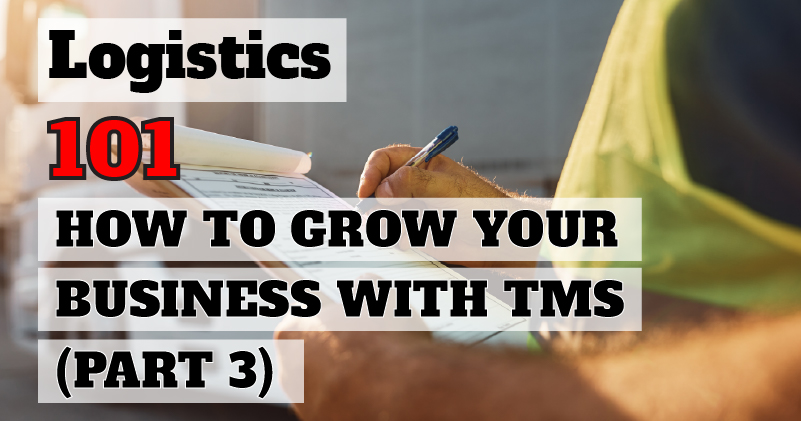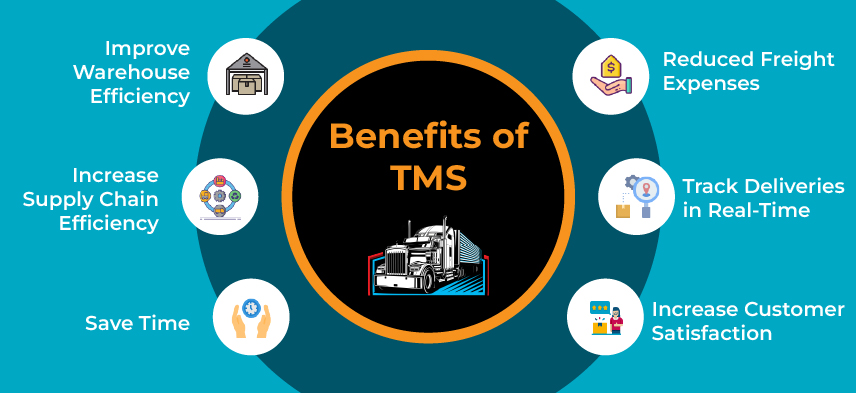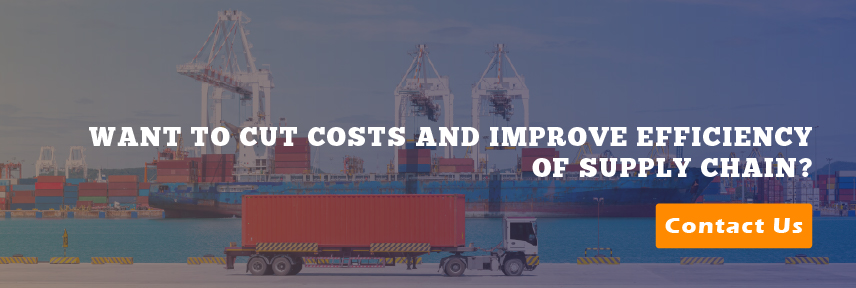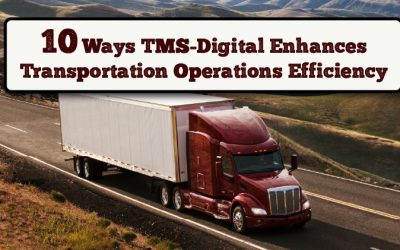
Logistics 101 – Part 3 is the third and final installment of an informative series on transportation management systems (TMS) and how they can be used to grow your business. This article will provide a comprehensive overview of what a TMS is, what are the benefits of TMS, and how it can be used to optimize your logistics operations. With this in-depth understanding of a TMS, you can make an informed decision on whether or not a TMS is suitable for your business. After reading this article, you will clearly understand how to take advantage of a TMS to maximize efficiency and improve your bottom line.
If you haven’t read the previous installments, read Part 1 & Part 2.
Benefits of TMS
A transportation management system is a software solution that ties your supply chain to help with transportation booking, routing optimization, tracking and tracing, and other logistics-related functions. In short, it connects all your stakeholders within the supply chain to provide them with information and functionality they could not get before. Investing in a TMS brings many benefits, including:
- Track Deliveries in Real-time
TMS enables you to keep track of your fleet in real-time. You can locate each driver on a GPS-enabled map and view information about their routes, delivery locations, and other necessary details. Complete fleet visibility paves the way for effective management, which boosts output.
You can optimize routes and make better timetables by tracking drivers. Additionally, you may find available drivers and distribute tasks accordingly. You can evaluate your driver’s performance using tracking and offer feedback.
- Reduced Shipping Costs
Using a transport management system, you may cut your freight costs on several fronts. You may shop around for the most incredible deals and save money. You can further reduce your freight costs via load-balancing and route optimization. The best utilization of resources is made possible through analytics and accurate real-time fleet information.
TMS improves workflow and freight management, which also leads to savings. You can drastically cut costs by using TMS and automating labor-intensive procedures.
- Enhance Warehouse Efficiency
Real-time order and delivery lifecycle tracking are possible with TMS. Based on this data, you may produce precise forecasts that increase the transparency of your supply chain network.
You can have a well-organized warehouse with the help of a transport management system. It makes inventory management and product tracking easier. Whether the goods are in the warehouse or route, you know exactly where they are. As a result, you can increase the procedures’ effectiveness.
Even better, since a TMS eliminates the need for human data entry, you can improve the accuracy of your shipments. Additionally, the program removes paper-based procedures, streamlining workflow.
- Boost supply chain efficiency
A cutting-edge transportation management system can provide a bird’s-eye view of the supply chain. Additionally, the system gives you complete visibility into your operations and access to real-time information. Managers can use the solution to seize every chance and deal with any problems that may come their way.
Additionally, efficiency is increased by having the capacity to track orders, drivers, and inventories.
- Time-Saving
Through its features, TMS helps you save priceless employee hours. Paperwork can be eliminated, and time-consuming tasks can be automated. Shippers have access to the appropriate data at the right moment to update and alert customers.
The software also saves time through rate and shipper comparison from a single platform. No longer are you need to navigate through countless spreadsheet pages! Customers can save time by using self-help websites to obtain all the information they require.
Therefore, a TMS can significantly aid in achieving the goal of time savings and constant strategic decision-making.
- New Delivery Capabilities
Your business can expand its delivery capabilities by using TMS to streamline your shipping. You might implement new shipping systems like point distribution to improve productivity and save expenses. Another example would be developing inbound programs between your company’s various locations.
A TMS makes it simple to establish a master bill of lading. Afterward, you can use unique logins at several places to manage everything from a single spot.
Using TMS software also enables you to plan and use your resources efficiently. It is time to implement any additional programs you may have using TMS.
- Improve Customer Satisfaction
TMS enables you to make on-time deliveries by assisting you in running your supply chain efficiently. Customers can follow delivery and receive updates on the status. Thanks to the TMS’s predictive analytics, you may communicate precise delivery updates to your consumers, such as late deliveries.
Additionally, TMS offers a connection between warehouse and order management, streamlining the entire process. You can combine client orders to get the most affordable delivery options.
TMS enables you to offer your clients individualized, on-demand service. Additionally, by keeping them updated, you can increase client satisfaction.
The Future of TMS
More than ever, supply chain organizations are looking to exploit the efficiencies of TMS to improve customer satisfaction, optimize operational performance, and support a competitive supply chain. The need for greater visibility and collaboration within organizations drives the widespread adoption of TMS. All of these factors are helping to spur the development of new and improved TMS.
TMS has a bright future, and we should expect the technology to grow increasingly capable and feature-rich. To deliver complete fleet information, including driving conditions and factors like fuel use, TMS providers are currently experimenting with IoT.
In fact, many of the top software providers are already testing and releasing the next generation of TMS. These new systems are built on artificial intelligence (AI) to create a more user-friendly experience. They are also designed to be cloud-based to take advantage of integrated functionality and be more easily integrated with other supply chain software.
Bottom line
As consumers grow more demanding and expect greater service levels, shippers and logistics providers seek cost-effective ways to improve their operations. A transportation management system is one way to achieve this. But to take advantage of the benefits of a TMS, companies must first understand how to use TMS.
TMS Digital offers a one-stop shop for all your trucking needs. Whether you are a first-time trucker or a long-time industry veteran, we have the resources to assist you. We offer a range of products and services, including telematics, dispatch, IFTA reporting, route optimization, load optimization, asset tracking, and data analytics, to help our clients improve their operational efficiency and profitability, reduce costs, and maintain regulatory compliance.
TMS Digital streamlines the trucking process, allowing you to focus on the essentials — hauling loads and making money. We are a technology company emphasizing people —our customers and our team. Thanks to our team of experienced professionals, we offer the best advice, tips, and tricks to help you maximize your profits and minimize your expenses.
Stay connected with TMS Digital’s industry-leading technology. Contact us today.










